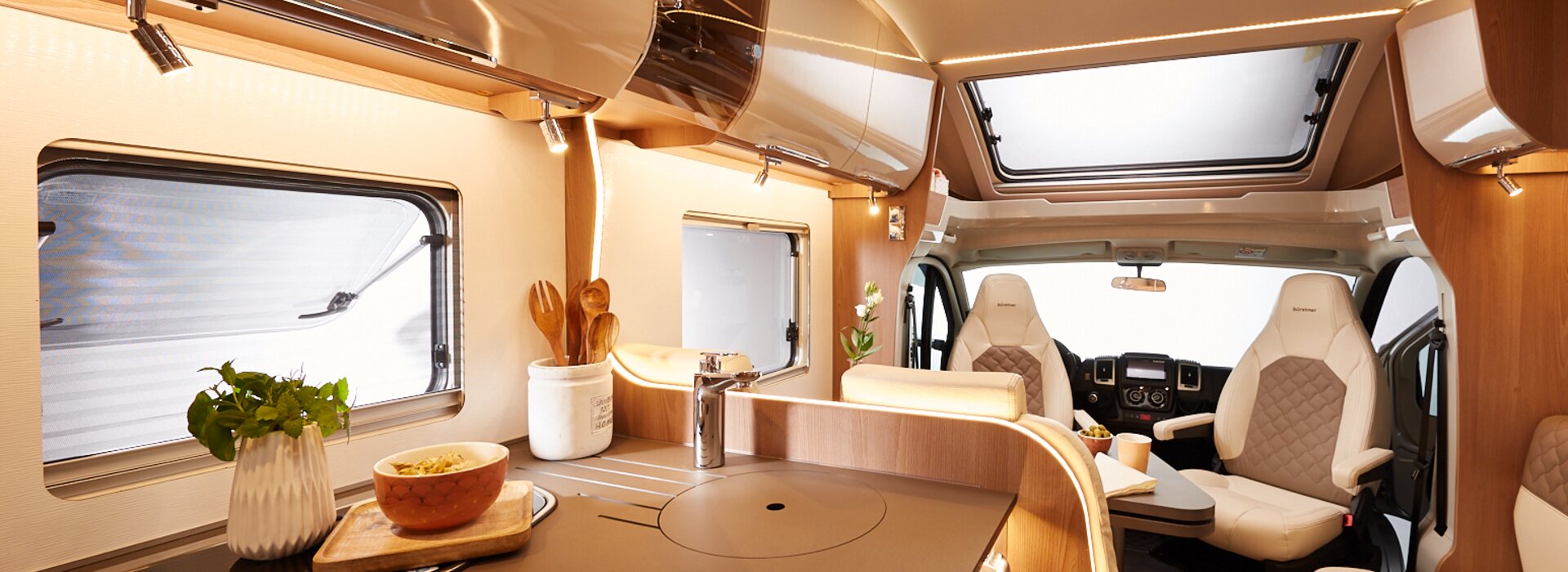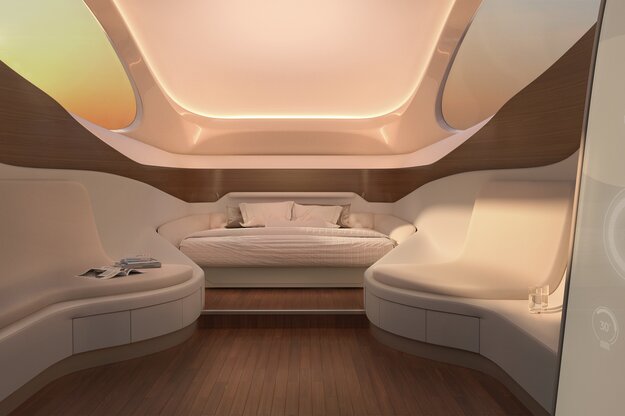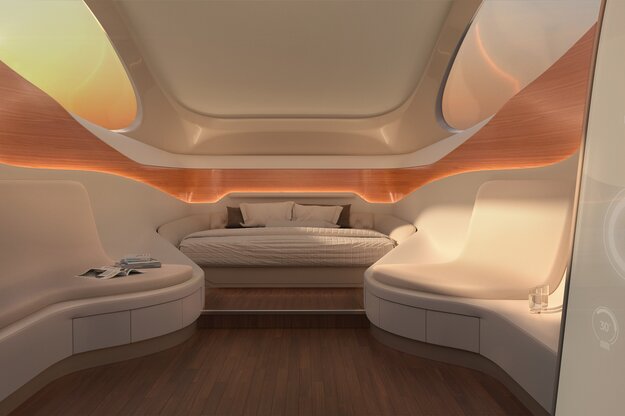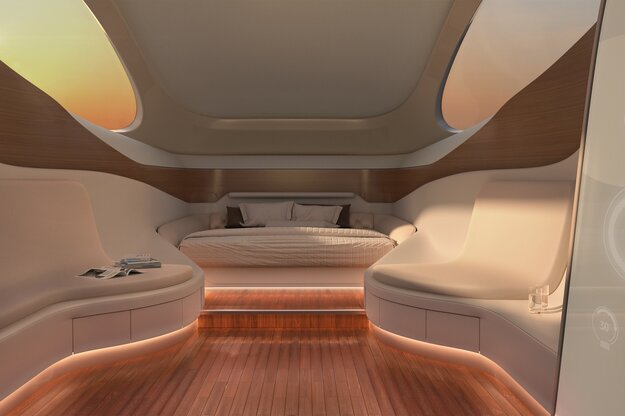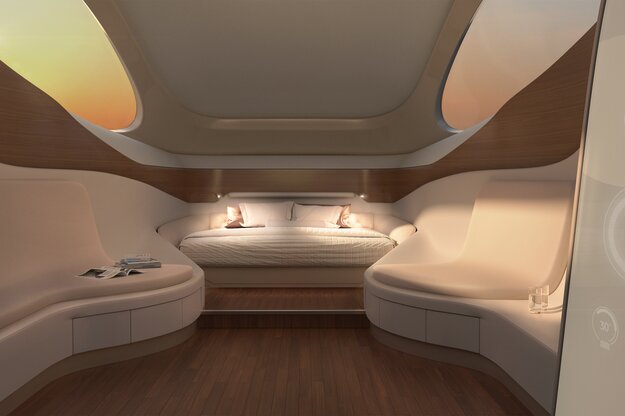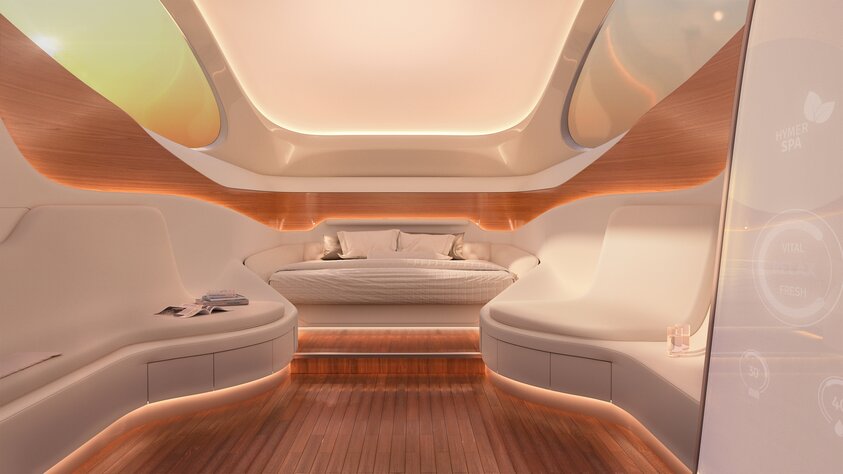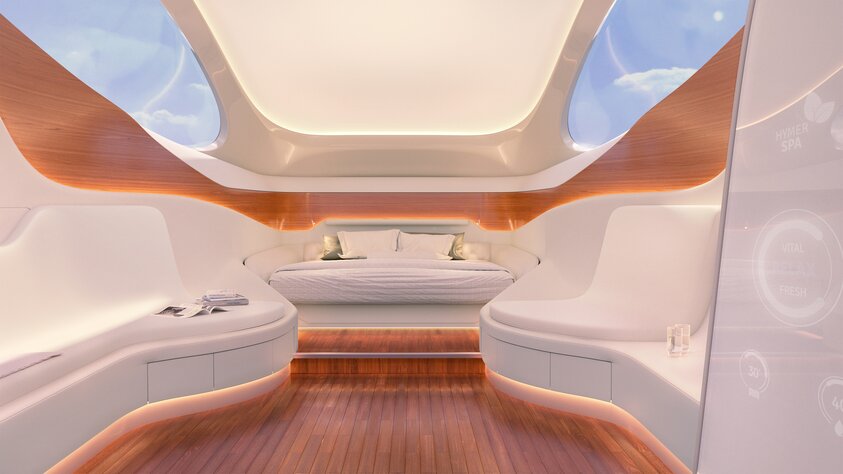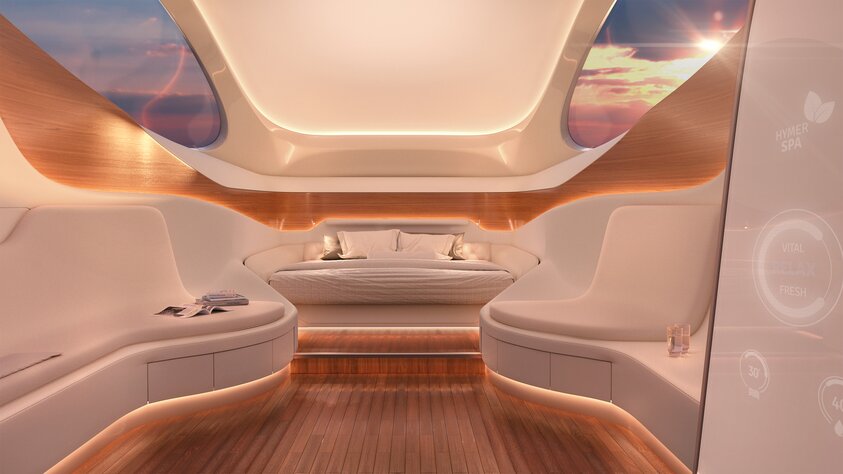Lighting for well-being
Lighting has an impact on our sense of well-being. Evolution has accustomed us to bright white light during the day and less, warmer-coloured light in the evening. Our metabolism and sleep quality benefit when we are exposed to the right kind of light. The Erwin Hymer Group has therefore especially focussed on the topic of lighting in the motorhome.
Everyone is familiar with the following situation: One person wants to stay up and read while the other is ready to go to sleep. And all this within a space of just a few square meters. Light sources in the motorhome should be able to take the different needs of occupants into account. The challenge: The motorhome is a living space whose spatial elements are used in various ways and can hardly be separated from each other. Thus, the seating area is meant for eating, but also for reading and watching television in comfort. Lighting has a decisive impact on our sense of well-being, which is reason enough to intensely deal with the topic of lighting in the motorhome.
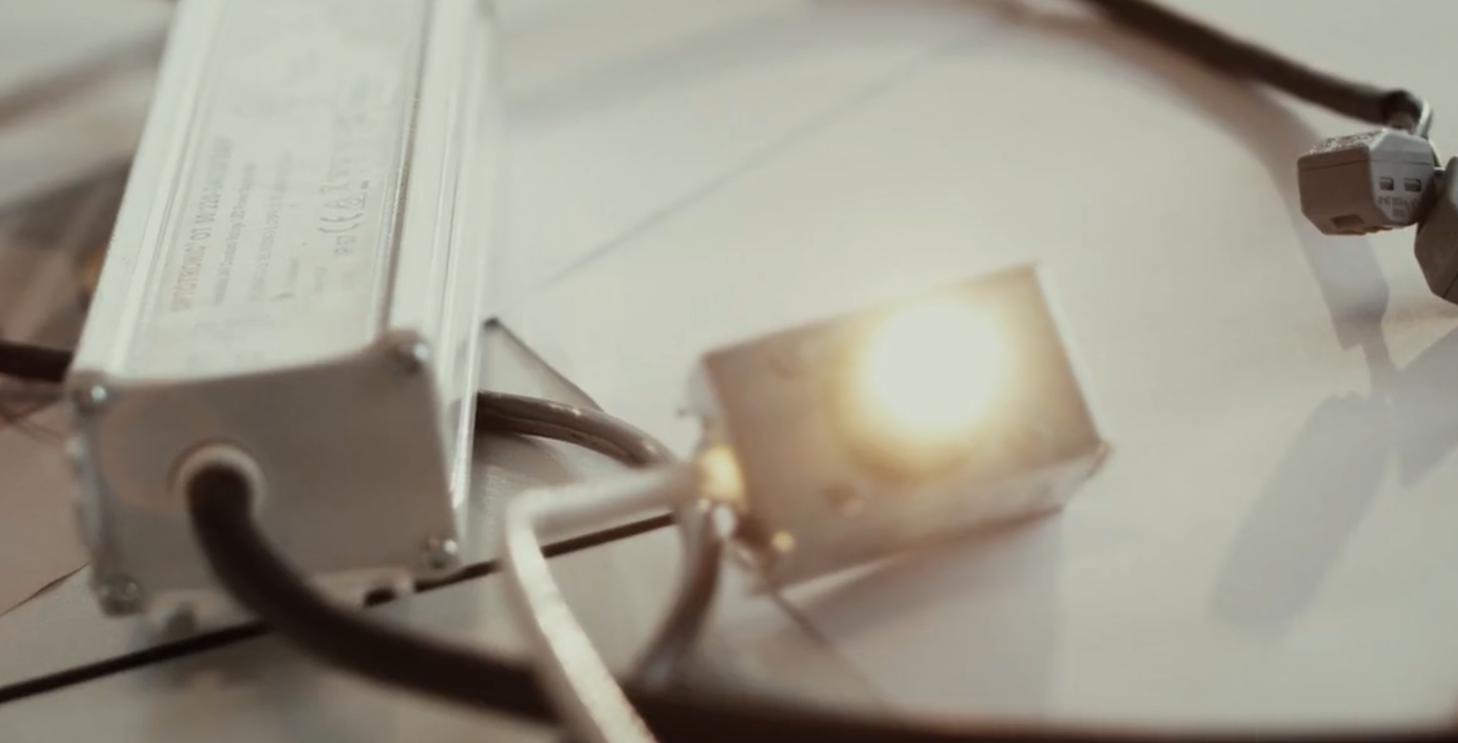
The paragon: daylight
Daylight is constantly changing, and our biorhythm has perfectly adapted to it. The colours of light vary throughout the day from cold to warm light, from high to low light intensities and from flat to steep radiation angles. The skies are sometimes clear (sunshine) and sometimes overcast (diffuse), which creates two types of light: direct sunlight and diffuse soft skylight. Daylight contains the total wavelength spectrum that we are able to perceive, which is why colour rendering of daylight is optimal and can never be reproduced with the same level of perfection.
Interference factors: displays, etc.
Our evolutionary development never conditioned us to browse on cellphones and tablets at night. Short-wave light with a high proportion of blue – as is customary in displays – disrupts the sleep-wake rhythm and has a negative effect on metabolism, mood and the immune system. Thus, light sources in the caravan and motorhome also impact our ability to deeply regenerate while on holiday. Therefore, the Erwin Hymer Group is intensely researching and optimising light conditions for mobile travel.
The right mixture makes the difference
Experts of the Erwin Hymer Group have defined four lighting levels (ceiling, wall, floor, functional lighting) in order to ensure the best lighting experience. These levels fulfil various tasks and jointly create the desired lighting conditions.
The combination of modern LED technology and networking makes it possible to integrate all lighting sources and levels. Central controls configure the various lighting levels and provide the right lighting moods for specific scenarios. The controls are operated via a fixed built-in panel, a remote control or an app on the smartphone or smart watch.
Dynamic ambient light
Centralised controls make dynamic ambient light possible. The concept is based on the philosophy of imitating daylight as closely as possible. Light intensity is automatically adapted to the respective time of day. Thus, the activation phase after getting up can begin with a higher light intensity and colour temperature of 4,000-6,500 kelvin. It is slowly reduced to 3,000-1,600 kelvin over the course of the day in order to signal to the body that the night's rest has begun.
Healthy night lighting
In addition to orchestrating moods, special tasks are also a focal point: Since many holiday-makers do not like to go to bed early, the technicians of the Erwin Hymer Group wanted to develop a light source that produces warm, white light without impacting the body's production of melatonin – the hormone that helps us go to sleep – which is a process that begins in the evening. The result: Electrically coated lenses from special glass filter out wavelengths of the primary light that prevent the release of melatonin. Thus, the 2,100k light source allows for long evenings – without feeling wound up after turning off the light.
Lighting without glare
High light intensity is necessary when performing demanding tasks that require good visibility – as for example reading. However, glare provokes adaptation disturbances in the eye that are perceived as unpleasant. Good anti-glare effects are especially important for reading lights.
Technicians especially focus on the quality of the light source and the surfaces. For example, LED lines consist of a sequence of light points. Even if these are concealed from view, individual points of light can still reflect – as the intensity is increased by reflective and shiny surfaces. Reflections create uneasiness in the room – experts refer to "visual noise" – that has a negative impact on attentiveness and our sense of well-being. Therefore, the choice of materials and the surface in the living space are especially important.
Light packages for weak eyes
The combination of light levels accommodates individual needs. Thus, older people require more light because the vitreous body of the eye becomes increasingly cloudy with advancing age as the ocular muscle loses its elasticity – a requirement that can be easily realised by networking numerous LEDs.
New technology, new opportunities
The impact of light on relaxation and well-being has long been underestimated. Ultimately, interior lighting for recreational vehicles was technologically limited: The 12-volt on-board power supply and respective bulbs only offered modest possibilities. However, networking and LED technology have opened up new possibilities and provide new options for the perfect holiday experience. Thanks to significantly reduced energy requirements with greater luminous efficiency, these advancements especially open up new dimensions for campers, which are often set up remotely.
